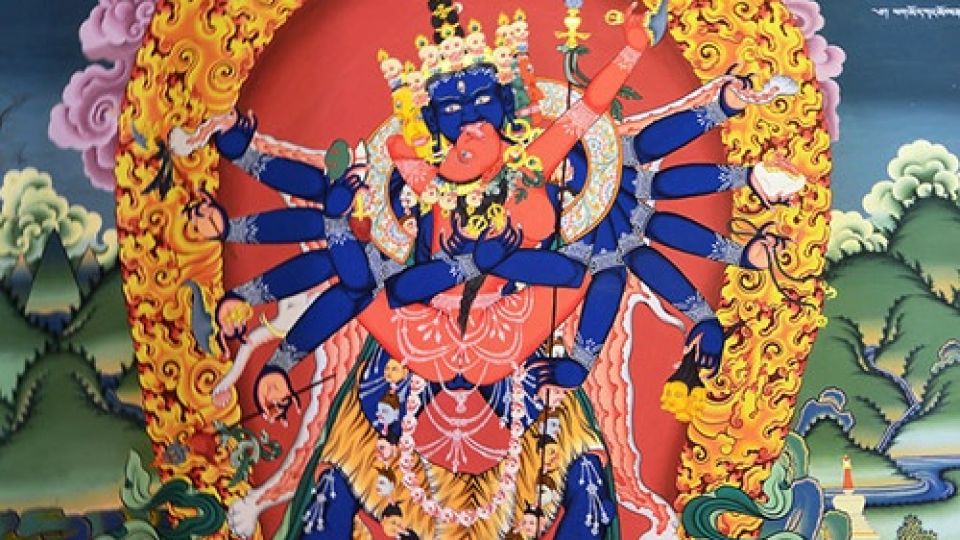by Kathryn Ryder from TMG
Please note that this very brief explanation is merely intended to give a taste for the profundity of tantric massage and tantric practice as antidote to what many people think is a mere superstitious belief in thousands or strange “gods” with many arms and feet that are having sex all the time. All the images and ritual involved are merely intended to practice very advanced techniques for training the mind and controlling subtle energies within one’s body.
It is quite the opposite of ordinary sex with attachment and craving.
As mentioned in my Tantric Exercises article, parts of the exercises in tantric practice are involving controlling and transforming bodily energies. Sexual energy happens to be one of the strongest forms of physical energy; simply said, it is built-in by nature to ensure the survival of the species. Also these sexual energies need to be completely controlled and transformed. What is usually overlooked is that sexual practices in tantra should
be free from the ordinary desires and lust, and only very advanced practitioners should try these practices after permission from their teachers. Simply said, it has very little to do with ordinary sex. Arousal of the sexual energy is preferably done by just visualizing a consort.
The union of male and female are symbolic for the union of method or compassion and wisdom, or more specific in tantra, the union of bliss and emptiness. (See also Keith Dowman’s website for a more elaborate explanation.)
“Through the skillful methods of tantra, meditators are able to cultivate
pleasure in a way that actually aids in spiritual progress. Afflicted
grasping and desires based on mistaken ideas are the problem, not happiness
and pleasure. If the pursuit of happiness and pleasure can be separated from
afflictive emotions, then it can be incorporated into the path and will even
become a powerful aid to the attainment of enlightenment.”
From ‘Introduction to Tibetan Buddhism’ by John Powers
This also illustrates one of the typical aspects of tantra: rather than repressing negative emotions like attachment, they are transformed into positive energy. But using this transformation principle has two sides: it is not only a very effective means of making mental changes, but if they are done without proper guidance of a qualified teacher, the practitioner can easily increase negative emotions rather than reducing them. So very powerful psychological techniques like tantra need to be treated with much care and consideration to avoid disastrous results for the practitioner.

